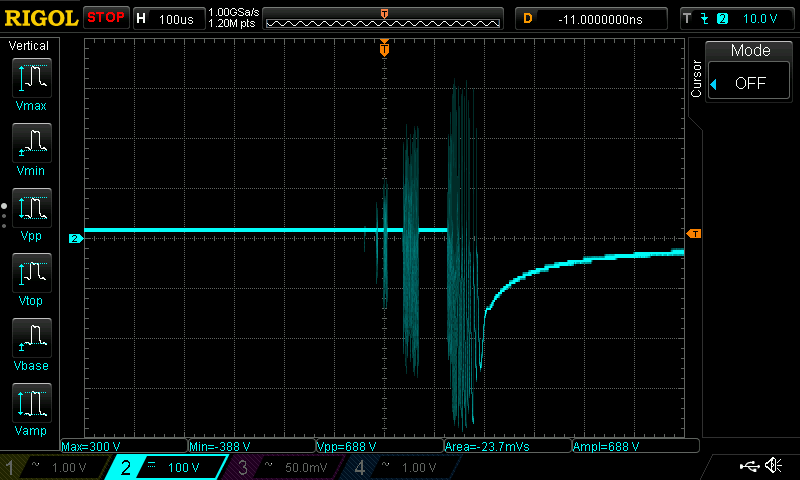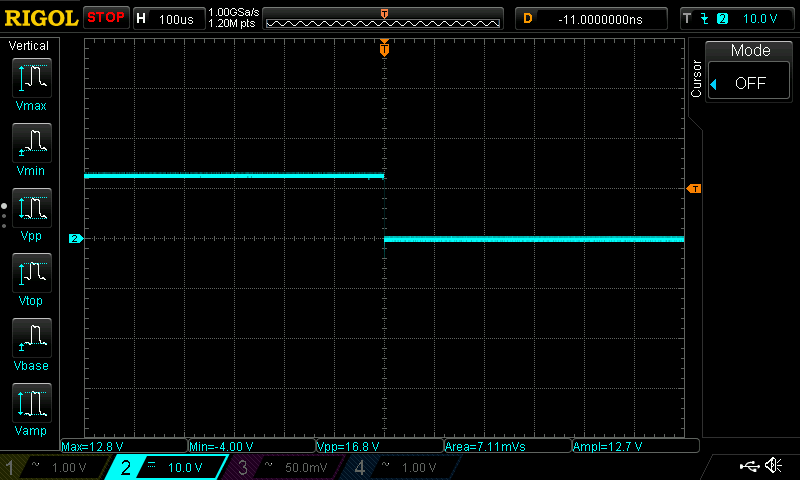1

 Observe caution when replacing the Starter Relay with an aftermarket one Sun Jun 25, 2017 7:45 pm
Observe caution when replacing the Starter Relay with an aftermarket one Sun Jun 25, 2017 7:45 pm
robmack
Life time member

It's a common complaint - a low battery voltage can cause the starter relay to fail resulting in the starter motor failing to shut off even after turning off the ignition.
So, some people fix the problem by buying an aftermarket starter relay and replacing the OEM one. It's a cheaper option however BE CAREFUL TO SELECT A RELAY THAT HAS PROTECTION DIODE ACROSS THE RELAY COIL. Yes, all caps. If you fail to observe this caution, you risk very quickly taking out your Ignition Control UNIT (ICU) which is a very expensive mistake.
There was a discussion about this topic on EEVBlog, but I'll include the two oscilloscope traces from that thread to illustrate the threat. When the engine catches, the ICU cuts the connection to the relay. The electricity does not stop flowing through the relay coil immediately and a very large voltage spike can result.

The oscillation apparent on this scope trace shows the voltage spike when power is removed from an automotive starter relay. Take note of the annotation at the bottom. The minimum observed +ve voltage is 300V, the minimum observed -ve voltage is 388V, the peak-to-peak voltage is 688 Volts. This same voltage will appear across the transistor driver in the ICU, which will immediately kill the device.
This whole threat can be eliminated by including a simple 1N4007 diode across the starter relay coil in the reverse direction, as shown below

The trace below shows the same relay with a snubber diode installed as above.

Now note that the oscillations are completely damped and the peak-to-peak observed voltage is 16.8 Volts.
If you purchase an aftermarket starter relay, just make sure to add the required diode. It will cost you $0.50 more but you potentially save having to replace a $200.00+ ICU.
So, some people fix the problem by buying an aftermarket starter relay and replacing the OEM one. It's a cheaper option however BE CAREFUL TO SELECT A RELAY THAT HAS PROTECTION DIODE ACROSS THE RELAY COIL. Yes, all caps. If you fail to observe this caution, you risk very quickly taking out your Ignition Control UNIT (ICU) which is a very expensive mistake.
There was a discussion about this topic on EEVBlog, but I'll include the two oscilloscope traces from that thread to illustrate the threat. When the engine catches, the ICU cuts the connection to the relay. The electricity does not stop flowing through the relay coil immediately and a very large voltage spike can result.
The oscillation apparent on this scope trace shows the voltage spike when power is removed from an automotive starter relay. Take note of the annotation at the bottom. The minimum observed +ve voltage is 300V, the minimum observed -ve voltage is 388V, the peak-to-peak voltage is 688 Volts. This same voltage will appear across the transistor driver in the ICU, which will immediately kill the device.
This whole threat can be eliminated by including a simple 1N4007 diode across the starter relay coil in the reverse direction, as shown below

The trace below shows the same relay with a snubber diode installed as above.
Now note that the oscillations are completely damped and the peak-to-peak observed voltage is 16.8 Volts.
If you purchase an aftermarket starter relay, just make sure to add the required diode. It will cost you $0.50 more but you potentially save having to replace a $200.00+ ICU.
__________________________________________________
Robert
1987 K75 @k75retro.blogspot.ca













